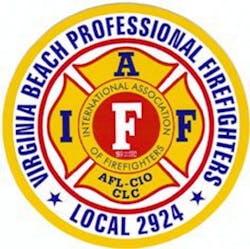VA Firefighters: Asbestos Burned in Training
By Jane Harper
Source The Virginian-Pilot
June 05 -- VIRGINIA BEACH, VA -- A firefighters organization recently filed complaints with federal and state agencies about a training exercise, claiming that fire officials endangered its members and the public when they burned an empty Pungo house that contained asbestos.
The city and the firefighters group agree the house contained the material, but how much was there and when fire officials learned of its existence is in dispute.
The two-story home was burned April 15 in the 2000 block of Princess Anne Road – a sparsely populated area near the Sherwood Lakes community and the city line. The house dates to the 1930s. It was offered for the training exercise by its owner, who knew one of the fire officials involved.
The Virginia Beach Professional Firefighters group, which represents about 90 percent of the city’s 500 firefighters, reported the incident to the FBI, Environmental Protection Agency and the state departments of environmental quality, labor and industry, as well as occupational safety and health, when they learned about the asbestos. They also informed the city’s auditor.
“This act appears to be a clear violation of federal and state environmental laws and cannot be tolerated or ignored,” Bill Bailey, a retired Virginia Beach firefighter and president of the organization, wrote in a statement released Monday to the group’s members.
“This incident was reported so that the appropriate city, state, and federal agencies could fully and thoroughly investigate this incident and take appropriate action. The trust of the public as well as the firefighters has been damaged and can only be regained by a complete, transparent, and thorough investigation along with appropriate consequences.”
The firefighters group claims that information it obtained through a Freedom of Information Act request shows that a battalion chief canceled the burn’s first scheduled date because he suspected that the building’s exterior contained asbestos.
But city officials say only a small amount of the substance was eventually found. They also say it was limited to an area near the fireplace and wasn’t discovered until weeks after the house was burned. But they conceded that mistakes were made and said they have taken steps to prevent it from happening again.
Asbestos is a naturally occurring mineral that was frequently used in homes and businesses from the 1920s to 1980s because of its resistance to fire and heat . The EPA banned its use in building products in 1989 after studies showed it could cause cancer if inhaled.
It’s still found in older buildings, but is not considered hazardous unless it becomes airborne. Proper removal and disposal can be costly and time-consuming.
None of the firefighters who ignited and then battled the blaze that day knew asbestos was present, Bailey said. Neither did residents who stood by. Bailey estimated that among the crowd were 20 to 30 children.
“It was like stadium seating out there,” he said. “People were pulling their cars over to watch.”
Records obtained through the FOIA request show communications about the planned burn began months before it happened.
On March 15, a district fire chief sent an email to four other fire officials notifying them that it had been assigned to the B shift, one of three firefighting shifts in the city. It was set to occur April 8.
About a week before the burn date, a battalion chief wrote about his suspicions that asbestos might be present. He also shared some research he conducted showing the prohibitions and restrictions related to live burns involving the material.
The burn was canceled the following day.
Four days later – on April 3 – the district chief who was friends with the homeowner scheduled the event for the following weekend. He also noted that the C shift would be handling it instead.
“We had offered it to B shift, but it didn’t work out,” the district chief wrote without mentioning in the email why the plan had fallen through. Two other fire officials who were aware of the previously canceled date were included in the email.
About 1 p.m. on April 15, the house was ignited as scheduled.
Fire Chief David Hutcheson said the district chief who scheduled it thought that the department’s training center had already reviewed the battalion chief’s suspicions.
“We missed some paperwork opportunities and we own that,” Hutcheson said. “But there was nothing that was done sneakily. It was simply an oversight.”
Scott Kalis, the city’s occupational safety and health manager, said he was told about the possibility of asbestos in the house about a month after it was burned. Tests conducted at the site confirmed its existence, but revealed only a small amount, he said.
“Because of its fire retardant characteristics, it may have been used in that area near the fireplace,” Kalis said.
Kalis and Hutcheson disputed that firefighters and residents were put in danger as a result of the burn. The amount was too small to have harmed anyone, they said.
“The last thing we would want to do is subject any of our firefighters and the public to a dangerous situation,” Hutcheson said.
___ (c)2018 The Virginian-Pilot (Norfolk, Va.) Visit The Virginian-Pilot (Norfolk, Va.) at pilotonline.com Distributed by Tribune Content Agency, LLC.






